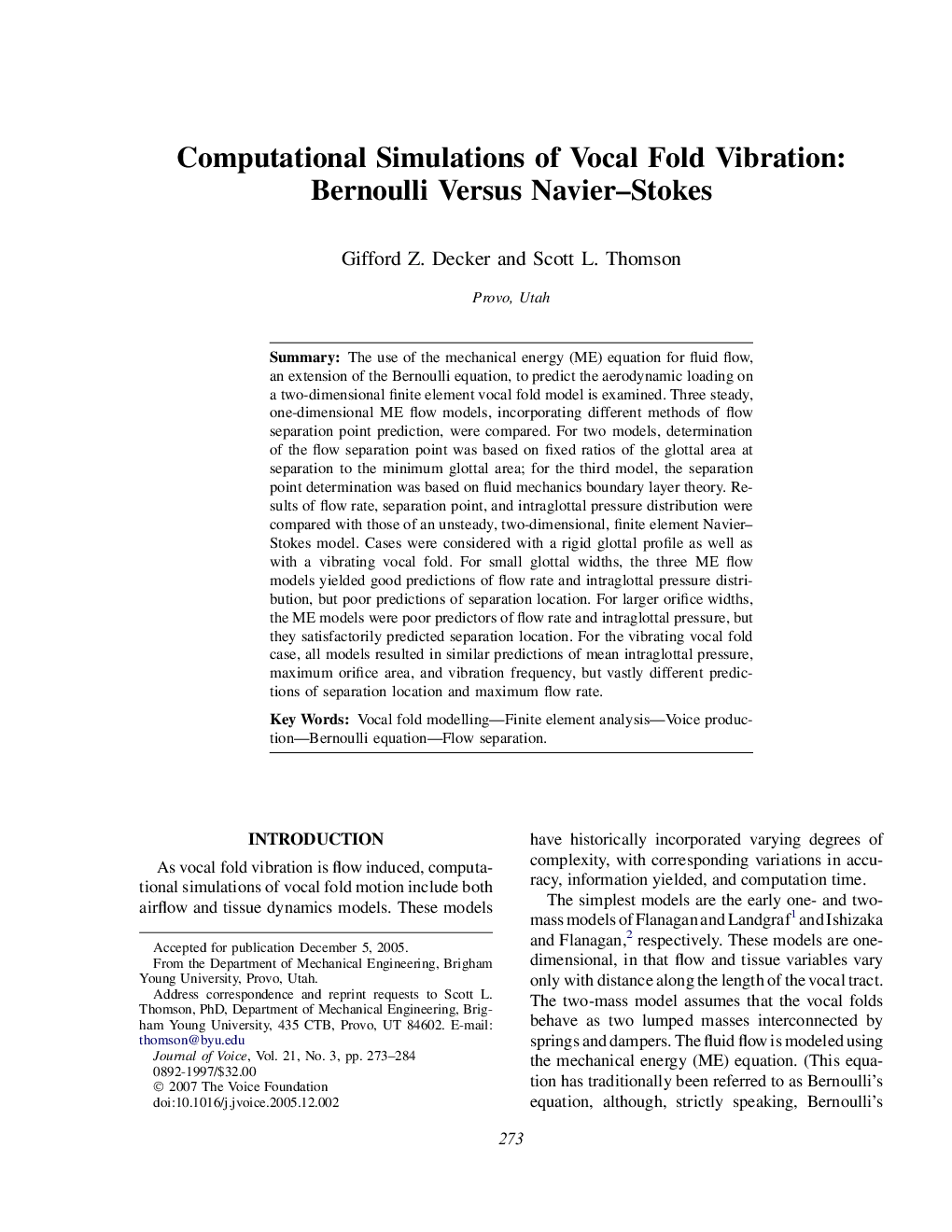| Article ID | Journal | Published Year | Pages | File Type |
|---|---|---|---|---|
| 1102344 | Journal of Voice | 2007 | 12 Pages |
SummaryThe use of the mechanical energy (ME) equation for fluid flow, an extension of the Bernoulli equation, to predict the aerodynamic loading on a two-dimensional finite element vocal fold model is examined. Three steady, one-dimensional ME flow models, incorporating different methods of flow separation point prediction, were compared. For two models, determination of the flow separation point was based on fixed ratios of the glottal area at separation to the minimum glottal area; for the third model, the separation point determination was based on fluid mechanics boundary layer theory. Results of flow rate, separation point, and intraglottal pressure distribution were compared with those of an unsteady, two-dimensional, finite element Navier–Stokes model. Cases were considered with a rigid glottal profile as well as with a vibrating vocal fold. For small glottal widths, the three ME flow models yielded good predictions of flow rate and intraglottal pressure distribution, but poor predictions of separation location. For larger orifice widths, the ME models were poor predictors of flow rate and intraglottal pressure, but they satisfactorily predicted separation location. For the vibrating vocal fold case, all models resulted in similar predictions of mean intraglottal pressure, maximum orifice area, and vibration frequency, but vastly different predictions of separation location and maximum flow rate.
